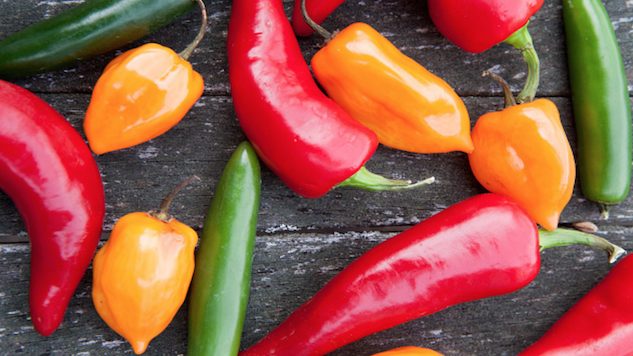Some Like It Hot: The Chile Pepper Bible
Photo by Melanie Stetson Freeman/The Christian Science Monitor via Getty Images
It’s trendy to love spicy food nowadays—especially if you’re a millennial, I’m told chiles, commonly referred to as peppers, can be so confusing. Most people think they’re all spicy, except for sweet bell peppers. (Those people have never had a Jimmy Nardello sweet red pepper, which taste like candy and are delicious raw.) And just because something’s labeled a chile pepper doesn’t mean that it’s hot; that’s why we’ve got the Scoville scale to help us sort it all out. There are so many different kinds, too, that it’s become something of what cookbook author Judith Finlayson calls a “work in progress” to maintain a record of all of them. However, the chile’s ease of growth, transport and preservation attest to its widespread use around the world—from the Americas to Asia and Europe and Africa. Chiles possess natural antimicrobial and pain-relieving qualities; you’ve probably seen topical creams to relieve sore muscles that contain capsicum (that’s the plant’s name). Chiles are kind of amazing.
-

-

-

-

-

-

-

-

-

-

-

-

-

-

-

-

-

-

-

-

-

-

-

-

-

-

-

-

-

-

-

-

-

-

-

-

-

-

-

-








































